
A 6 metre long whale shark (Rhincodon typus), shot by police after it was trapped at a kelong near Pulau Sebarok in 1964. This is the only record of this species in our waters;
The Straits Times, 7 June 1964
This year's theme for Singapore Blog Awards is "60s Fever", and I thought it would be nice to take a look back at what it was like for Singapore's biodiversity in the 1960s.

Singapore's Master Plan from 1958. Some of the Southern Islands are not included in this map.

Singapore, according to the Urban Redevelopment Authority's (URA) Master Plan 2008. You can see how much our coastline has changed since 1958.
It's difficult to characterise the 1960s as being better or worse for our wildlife as a whole. On the upside, there was less urban development. Forest patches were still connected to one another in a mosaic of agricultural land, plantations, secondary scrub, and other rural landscapes. And this was a time before extensive land reclamation changed the shape of our coastline and caused our waters to turn murky. Numerous communities along our shores depended on the sea's bounty for their livelihoods.
On the flipside, protecting wildlife and habitat conservation were not high priorities among the people, both before and immediately after we became an independent nation. Many of the articles I've found are reports of wildlife being dealt with through lethal means, when today we place emphasis on live capture and relocation, and promote education and changing human attitudes as a better strategy to resolve human-wildlife conflict. And strange as it may seem, some species that we now find in Singapore today were absent during the 1960s, having first vanished during the initial wave of deforestation during the 19th century and early 20th century, not to mention uncontrolled hunting. It is only in recent years that some of these formerly extinct animals have returned to our shores, possibly due to a combination of extensive planting of urban greenery and the creation of parks and other green spaces, as well as increased habitat loss in southern Johor.
Here are ten articles that provide us with a glimpse of Singapore's wildlife during the 1960s...
The Straits Times, 15th April 1965

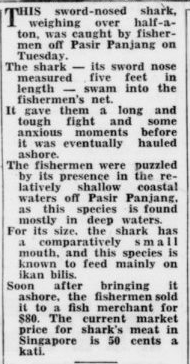
I haven't heard of any recent records of sawfishes in Singapore waters, but as this article shows, they used to be found locally. In 1960, another massive sawfish was caught, and was described as a monster that had been "terrorising fishermen and picnickers."

Green sawfish (Pristis zjisron), Underwater Adventures Aquarium in Minnesota, United States of America;
(Photo by Zoodiver)
Today, all species of sawfish are listed as Critically Endangered, and all international trade has been banned since 2007. Live trade for public aquaria was still allowed for one species of sawfish, but that too came to an end this year, after it was agreed that the largetooth or freshwater sawfish (Pristis microdon) should receive the same amount of legal protection against trade as the rest of its relatives.

Sawfish caught off the West Coast, 1965;
(Photo from Singapore Waters - Unveiling Our Seas)
It's sobering to think about the marine giants that were once abundant here, but which have since vanished from the seas around Singapore. Uncontrolled fishing of species that are slow to mature and reproduce certainly played a role, but it's also likely that habitat destruction was an important factor behind the disappearance of sawfish and other species. Our coastal waters still support a diverse range of marine life, but for now, these large predators are still absent.
The Straits Times, 11th July 1967

It seems as if Pasir Panjang has plenty of literal big fish stories. Sharks were once very common in Singapore waters, and could be found patrolling coastal areas. In one incident, a large shark that was caught at Siglap was simply dumped at sea instead of sold in the market, due to its supposed worthlessness.
We do still have sharks on our reefs, but besides rare sightings, the large species seem to have all but disappeared.
The shark that had been found with human remains in its stomach was a tiger shark (Galeocerdo cuvier), and its jaws used to be on display in the Public Gallery of the Raffles Museum of Biodiversity Research (RMBR).
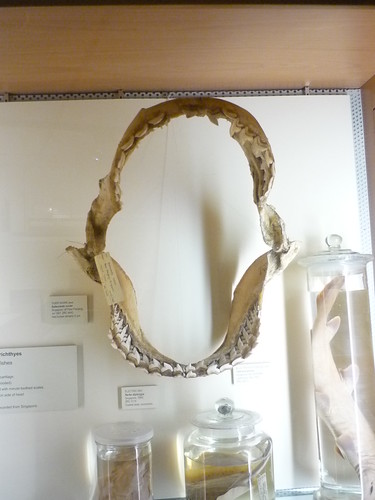
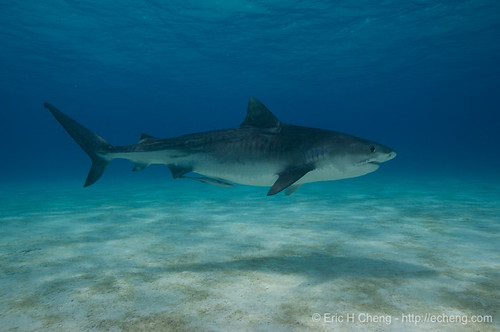
Tiger shark, Bahamas;
(Photo by echeng)
After Singapore became an independent state, there were concerns that coastal development and reclamation were destroying our reefs and other marine habitats.
Singapore Waters - Unveiling Our Seas, a book published in 2003 by the Marine Conservation Group of the Nature Society (Singapore), shares many more photos and accounts of life by the sea during the 1960s, and the marine life that was once commonly found in these waters.
The Singapore Free Press, 29th December 1961

Long-tailed macaques (Macaca fascicularis) are no longer found in the Singapore Botanic Gardens, save for the occasional wandering loner, but in the 1960s, the resident troop was accused of wreaking havoc. I'm sure much of it was due to overpopulation as a result of feeding by people. This led to lots of conflict between humans and macaques, although ultimately, the monkeys lost.

Long-tailed macaques, Upper Peirce;
(Photo by NatureInYourBackyard)
There are also reports of monkeys causing trouble in places where they're no longer found today, such as in Fort Canning and Sembawang, although some of the culprits were actually pets that escaped from captivity.
Speaking of captive primates...
The Straits Times, 31 August 1962

Singapore was an important location for wildlife trade in the region, and many people had exotic pets. In 1963, a female proboscis monkey from Sabah escaped from captivity at Alexandra Barracks, although there is no news as to whether she was recaptured.
The Singapore Free Press, 4 July 1960

Seriously.
The 1960s were a time when Singapore was beginning to expand into the ornamental fish industry, with the breeding of aquarium fish for export being seen as a profitable business. Then-Prime Minister Lee Kuan Yew had an aquarium worth $560 outside his office, to "put guests in a nice frame of mind" before meeting him.
It was also a time when the Van Kleef Aquarium (opened in 1955) was an extremely popular and well-renowned attraction, and when plans were still being made for the Singapore Zoo and Jurong Bird Park.

Undated postcard featuring the Van Kleef Aquarium;
(Photo from ofey)
The Straits Times, 13 May 1960
![]()


Even today, reticulated pythons (Broghammerus reticulatus) continue to thrive in Singapore, although it seems like the irrational fear that people often have of snakes also continues to exist. There are many articles from the 1960s of pythons being reported in all sorts of places, causing panic among residents. Most were killed, others sold, while a few were brought into captivity. An editorial from 1965 about local snakes even noted that the king cobra (Ophiophagus hannah) was "fairly common", when today, not many can claim to have seen this snake in the wild.
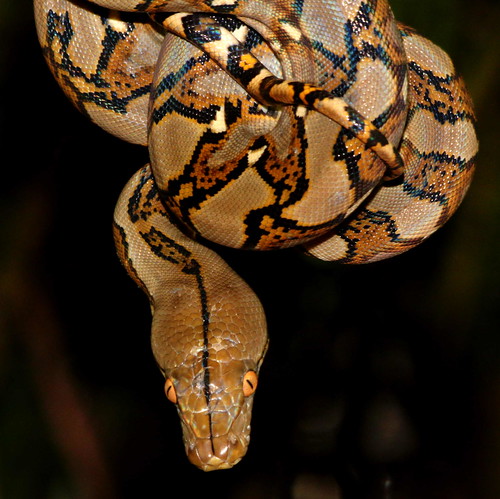
Juvenile reticulated python, Queenstown;
(Photo by Anne Devan-Song)

King cobra, Sungei Buloh;
(Photo by myrontay)
It's also worth noting that during the 1960s, hunting was still a popular hobby, and many people owned rifles and shotguns. Some travelled over to Johor in search of game, while others pursued flying foxes, civets, birds, crocodiles, and pythons locally.
One of the favourite targets of Singapore's hunters in the 1960s, the Malayan flying fox (Pteropus vampyrus) is one of the world's largest bats, and is sadly now no longer resident in Singapore. It's likely that hunting at roosting sites not only killed large numbers of flying foxes, but also drove the survivors to seek sanctuary elsewhere. Today, these large fruit-eating bats are only rare visitors to Singapore, flying over from Peninsular Malaysia (where they are still hunted) or Indonesia to look for fruiting trees.
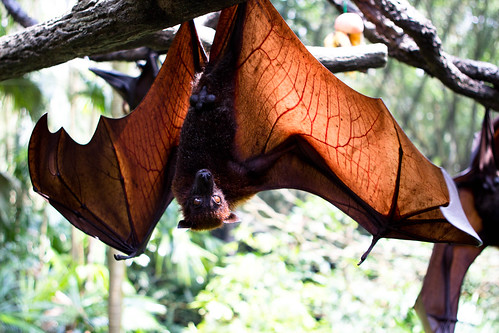
Malayan flying fox, Singapore Zoo;
(Photo by Will Symons)
The Straits Times, 23 June 1968

I'm particularly amused by this person's luck in encountering pythons while swimming. But seriously, even though the Singapore River has been cleaned up (another way in which the environment is actually better now compared to the 1960s), I still wouldn't swim in there. I certainly don't think that the waters off Boat Quay in the 1960s were a very pleasant place for a dip.
The Straits Times, 24 March 1962

Another big snake story, and one that's far larger than any of the longest reticulated pythons ever measured! For what it's worth, giant pythons always shrink whenever a tape measure turns up.
Pulau Ayer Merlimau was eventually joined with other neighbouring islands to create Jurong Island.

(Map from chemicals-technology.com)
The Straits Times, 18 March 1960

Another large reptile that generated much fear in Singapore during the 1960s was the estuarine crocodile (Crocodylus porosus). Although considered rare, even locally critically endangered today, it appears that back then, crocodiles were quite widespread and seen quite often in coastal areas. Some of these may have escaped from crocodile farms; Singapore was a major importer and re-exporter of crocodile skins.

Estuarine crocodile, Sungei Buloh;
(Photo by Mendis)
The Singapore Free Press, 15 August 1960

The common palm civet or musang (Paradoxurus hermaphroditus) is one of several native mammals that are relatively tolerant of human activity. It's not surprising that during the 1960s, civets were often found near villages, where they made a living by feeding on rats, and raiding fruit orchards and chicken coops, although 700 does seem like a lot of chickens. Is it possible that not all the chickens were taken by civets? And how did the people know that there were 30 civets? Maybe the especially industrious civet at Serangoon Gardens that was said to have snatched 300 fowl over two months that same year was also at work in Yio Chu Kang!

Common palm civet, Siglap;
(Photo by kwokwai76)
Based on these news articles, and many more that I've looked up, the 1960s would have been a very interesting time for wildlife enthusiasts and naturalists in Singapore! Although it does seem that some accounts might be the result of exaggeration or hyperbole, and need to be taken with a lot of salt.

D.S. Johnson's An introduction to the natural history of Singapore was first published in 1964, and gives an excellent overview of Singapore's biodiversity, as known during the 1960s. A revised edition, published in 1992, may still be found in public libraries.
There are lots of other interesting articles about wildlife in and around Singapore that can be found in the online news archives, and I'll share more of them another time.
(Cross-posted to SBA Plus)
Source: http://lazy-lizard-tales.blogspot.com/2013/06/flashback-wildlife-news-in-1960s.html
Super Bowl Halftime Show 2013 Super Bowl Commercials 2013 Ray Lewis Murders 2013 Super Bowl Commercials joe flacco Go Daddy Superbowl Commercial 2013 michael oher


